The supposed awkward middle child of Samsung’s Galaxy S23 collection certainly has potential, with a large high-end display, a big battery and faster charging than the standard S23 without the price tag of the top-end S23 Ultra.
Key Features
-
Gorgeous displayThe 6.6in AMOLED 120Hz display is perfect for scrolling through social media and watching videos -
Top-end performanceThe Snapdragon 8 Gen 2 for Galaxy provides flagship-level performance -
Long-term software supportSamsung promises 4 years of OS upgrades and 5 years of security updates with the S23 Plus
Introduction
Samsung has just lifted the lid on the hotly anticipated Samsung Galaxy S23 range; the S23, S23 Plus and S23 Ultra.
The Samsung Galaxy S23 Plus offers key specs including a 6.6-inch AMOLED display, a triple camera setup and Qualcomm’s special ‘Snapdragon 8 Gen 2 for Galaxy’ chipset, but is it a worthy upgrade to last year’s Galaxy S22 Plus?
I spent a bit of time with the Samsung Galaxy S23 Plus at a hands-on event prior to its reveal, and here’s what I think about it so far.
Design and screen
- Refreshed design
- Slightly too big for one-handed use
- Gorgeous 6.6in AMOLED display
Like the entry-level Samsung Galaxy S23, the Galaxy S23 Plus has had a slight tweak to its design to make it more closely resemble the Galaxy S23 Ultra. It’s a more unified approach to design than the S22 series with the Ultra model looking completely different to the rest of the collection, with both the S23 and S23 Plus ditching the contoured camera housing on the rear for something much more minimalistic.
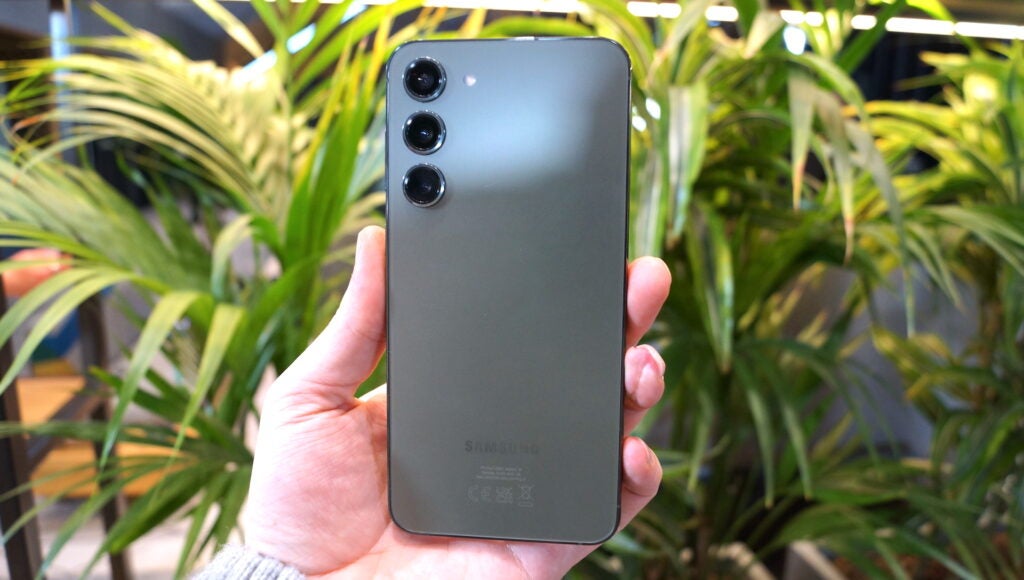
That’s paired with flat aluminium edges and surprisingly rounded corners – at least compared to the Ultra model – that, in my opinion, brings the look and feel of the S23 Plus closer to that of an iPhone 14. I’m sure there will be some people that love it, but for me, it’s a little too simple. Even a textured finish on the rear would’ve jazzed things up a bit.
The colour options are also in sync across the range with all three models coming in the same phantom black, cream, green and lavender finishes, meaning you won’t have to fork out any extra to get the colour you prefer.
The 6.6in AMOLED display means that the Galaxy S23 Plus isn’t quite as pocketable as the 6.1-inch Galaxy S23, though it’s still a ways away from the beast that is the Galaxy S23 Ultra. It’s still possible to use it one-handed as I found out during my hands-on session, but the edges of the S23 Plus felt noticeably sharper than those of the standard S23 which felt comparatively lovely in the hand.
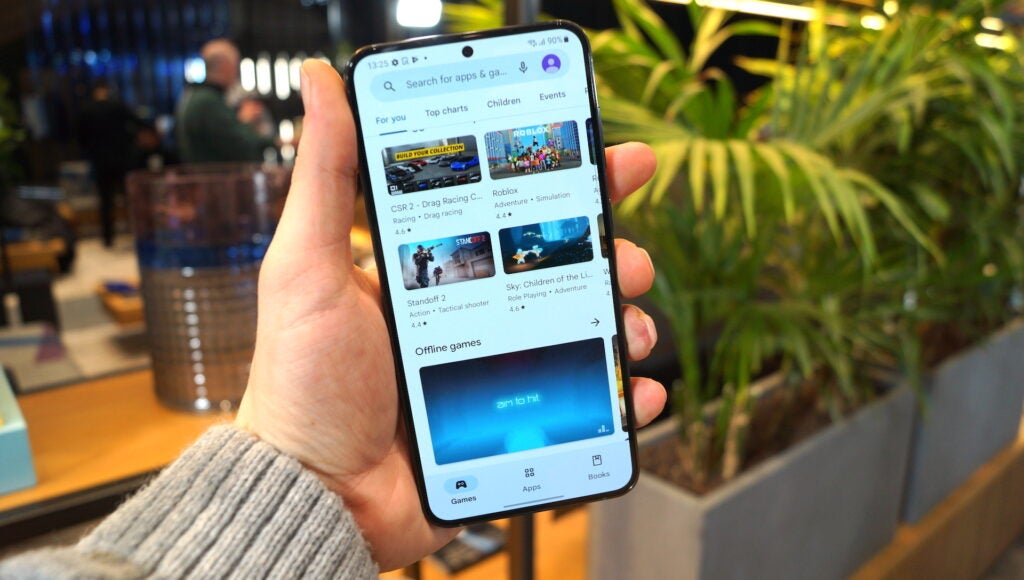
The flat 6.6-inch display is one of the strong selling points of the S23 Plus though; it’s bright, vivid and buttery smooth thanks to the combination of Dynamic AMOLED 2X tech, a high-resolution display and a 120Hz refresh rate. It’s the ideal size for watching TikToks and scrolling through social media in my opinion, with a screen large enough to really appreciate the smaller details – though with the obvious caveats about its overall size.
It’s not that different from its predecessor admittedly, with the exception of Corning’s latest and greatest Gorilla Glass 2 Victus screen protection that Corning suggests should perform well when dropped onto concrete surfaces, but let’s wait and see what happens once the phone begins to appear in the hands of particularly drop-prone consumers in a few weeks’ time.
It’s also more eco-friendly than its predecessor, with Samsung claiming that the phone uses a combination of recycled components and materials like recycled fishing nets, water barrels and PET bottles, though exactly how much of the overall smartphone is made from recycled materials is yet to be confirmed.
Cameras
- Only minor rear camera improvements
- RAW photography up to 50MP
- New 12MP selfie camera
With the addition of a whopping 200MP snapper on the S23 Ultra, you might’ve been hoping for similar gains on the standard models, but that’s sadly not the case. Like its predecessor, the Samsung Galaxy S23 Plus comes with the rear combination of a 50MP main, 12MP 120-degree wide-angle and a 10MP 3x telephoto lens.
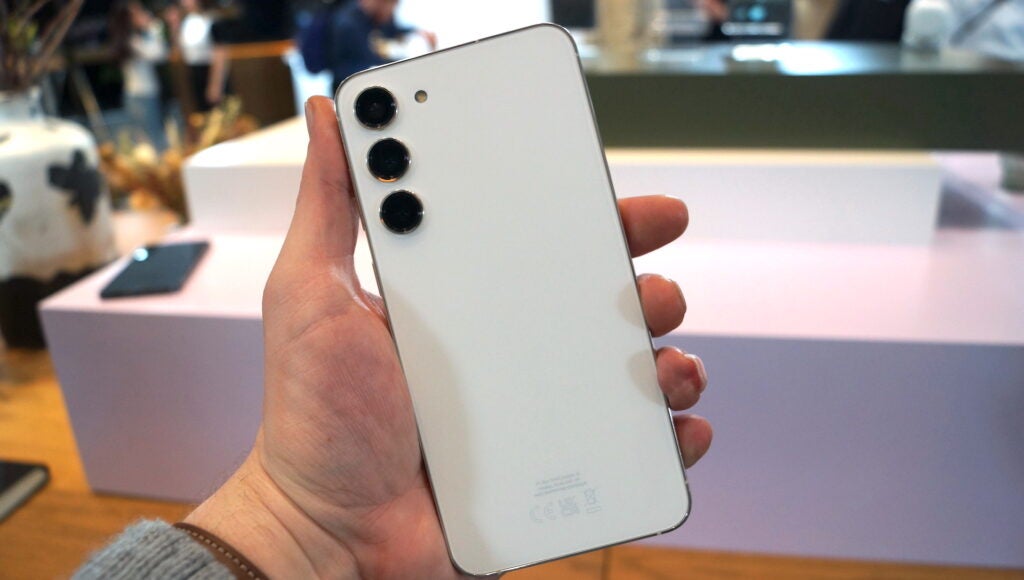
That may not excite those looking to upgrade from the S22 range, but improvements to the onboard AI mean photo processing has improved. I snapped away during my pre-brief and was pretty impressed by the level of detail, though I should note that it was a fairly well-lit space. The real challenge will be when light levels begin to drop.
There are enhancements to the Expert RAW with this year’s S23 Plus able to take full-resolution 50MP RAW images – quite the improvement compared to the 12MP output of the S22 range. I can’t see many people using RAW on a regular basis with such large file sizes, but it’s nice to have the option to squeeze as much detail out of a scene as possible.
There’s also top-level video performance with the ability to shoot in up to 8K@30fps with faster framerates available at 1080p and 4K.
Flip the S23 Plus over and you’ll see an upgraded 12MP front-facing selfie camera, up from 10MP, with new features including Samsung’s Super HDR and 60fps video recording capabilities. While that may not sound like much of a boost, it’s worth noting that this is the same selfie camera found in the top-end S23 Ultra, so expect great things.
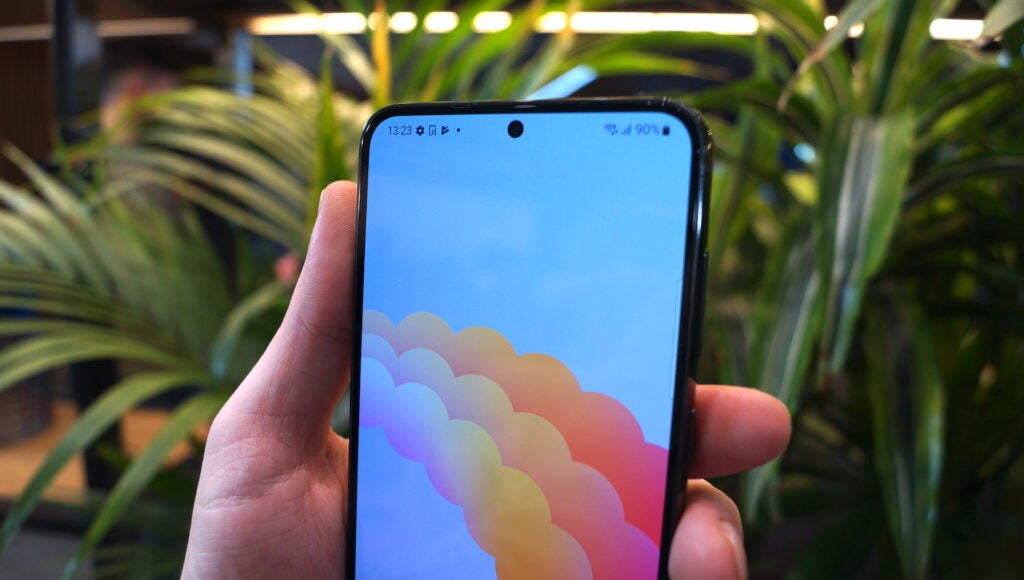
Performance
- Snapdragon 8 Gen 2 for Galaxy
- Same 44W charging as S23 Ultra
- Fairly large 4700mAh battery
At the heart of the Samsung Galaxy S23 Plus you’ll find a special version of Qualcomm’s latest chipset dubbed the ‘Snapdragon 8 Gen 2 for Galaxy’.
It’s not just a simple branding exercise either; Qualcomm has confirmed that the unique version of its latest chipset comes with a boosted 3.36GHz peak CPU speed, up from 3.2GHz of the standard 8 Gen 2, along with an upgraded Adreno GPU that’s both better performing and more energy efficient than the standard chipset. The Samsung phones should have quite the edge in performance compared to other Snapdragon 8 Gen 2-equipped flagships, but I’ll reserve judgement until I have full benchmark results.
The best news for European fans is that the Galaxy S23 Plus will ship with the Qualcomm chipset no matter where you are, a welcome change compared to the Snapdragon and Exynos split over the past few years.
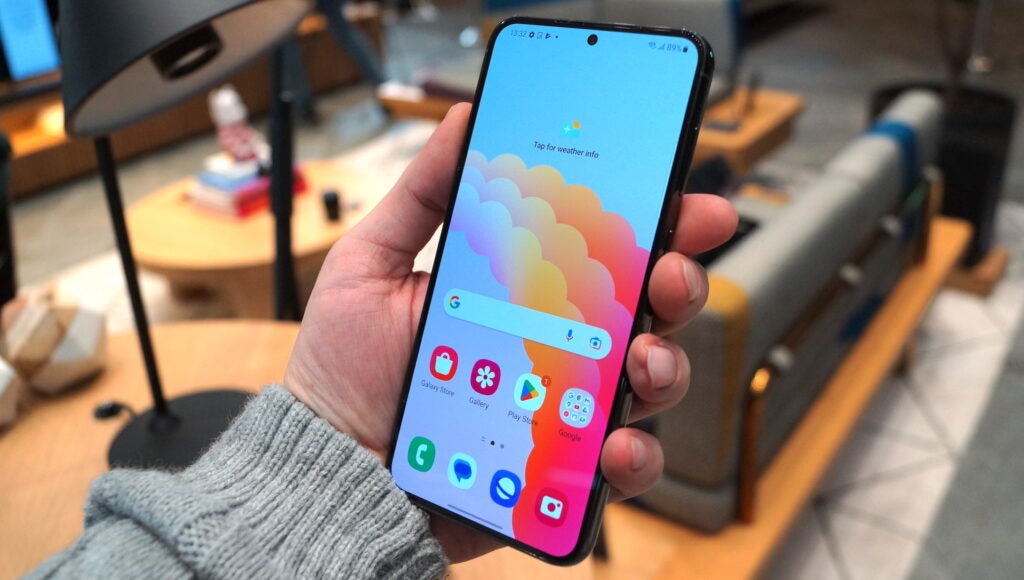
That’s paired with either 256GB or 512GB of storage depending on the variant you go for. Given the lack of a microSD card slot, a higher storage tier is a nice option for particularly storage-heavy users. Those 8K videos you’ll no doubt be shooting take up a lot of storage space, after all…
One of the key benefits of the larger Galaxy S23 Plus compared to its smaller sibling is battery life, boasting a larger 4,700mAh battery – up 200mAh from last year – that’s very close to the 5,000mAh of the top-end S23 Ultra.
That’s paired with the same 44W charging as the Ultra model, a 19W boost compared to the 25W charging of the standard S23. It’s not exactly rapid compared to the 120W charging from the likes of the Xiaomi 12, but it should reduce the amount of time you spend tethered to the wall.
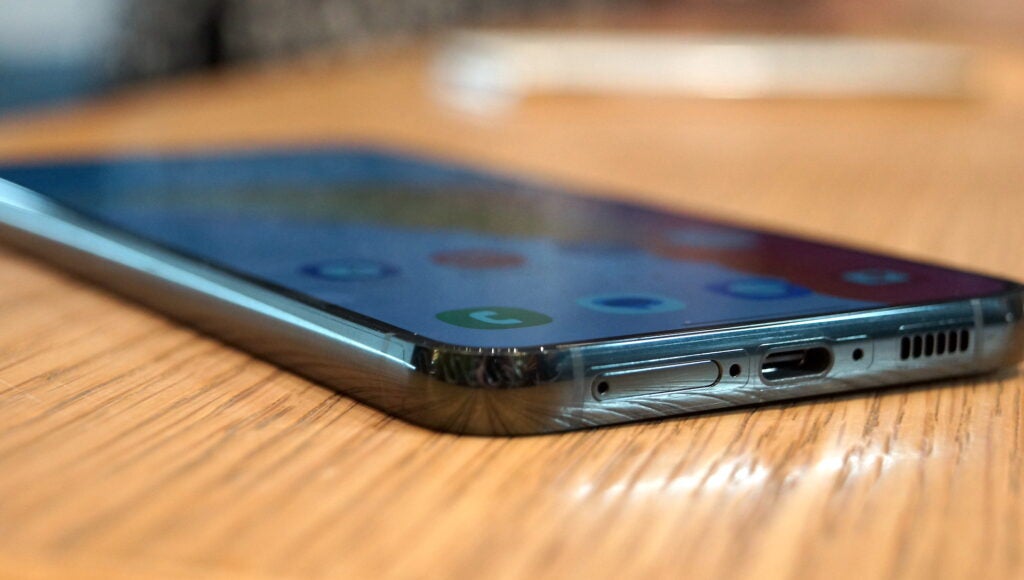
The Galaxy S23 Plus ships with Android 13 rocking Samsung’s latest OneUI 5.1 skin on top. It boasts new features like customisable modes and routines that, as I understand, offer something close to the Focus modes introduced to iPhone with iOS 16. There are also smaller features like the ability to reply to an incoming call with a text using Bixby and new UI customisation tools to enjoy, but it’s not exactly a groundbreaking update to Samsung’s skin.
There is, however, four years of Android OS upgrades and five years of security updates on offer that should take you through to Android 17. Android phone makers have been bolstering long-term software support over the past few years, but Samsung’s is still one of the most competitive for long-term use.
Early Verdict
The Samsung Galaxy S23 Plus might seem like the awkward middle child of the S23 range sat between the small-screen S23 and all-singing-and-dancing S23 Ultra, but if you’re more focused on entertainment than productivity and high-end photography, it looks to be a more tempting and, rather crucially, cheaper option than the top-end S23 Ultra.
It’ll be interesting to put the phone, and its unique chipset and camera setup in particular, to the test when we get a sample back to the Trusted Reviews office.
See how the Galaxy S23 Plus compares to the rest of the S23 range here:
Jargon buster
mAh
An abbreviation for milliampere-hour and a way to express the capacity of batteries, especially smaller ones in phones. In most cases the higher the mAh, the longer the battery will last but this isn’t always the case.
OLED and AMOLED
Types of displays that use self-lighting pixels to provide greater contrast and more vibrant colours than a typical LCD display, as well as sharper blacks.
5G
Offering faster download and upload speeds when compared to 4G. Great for game streaming and HDR video playback. Not supported everywhere yet and speeds vary wildly.
















